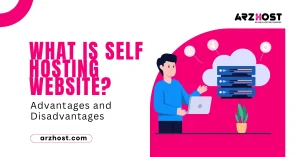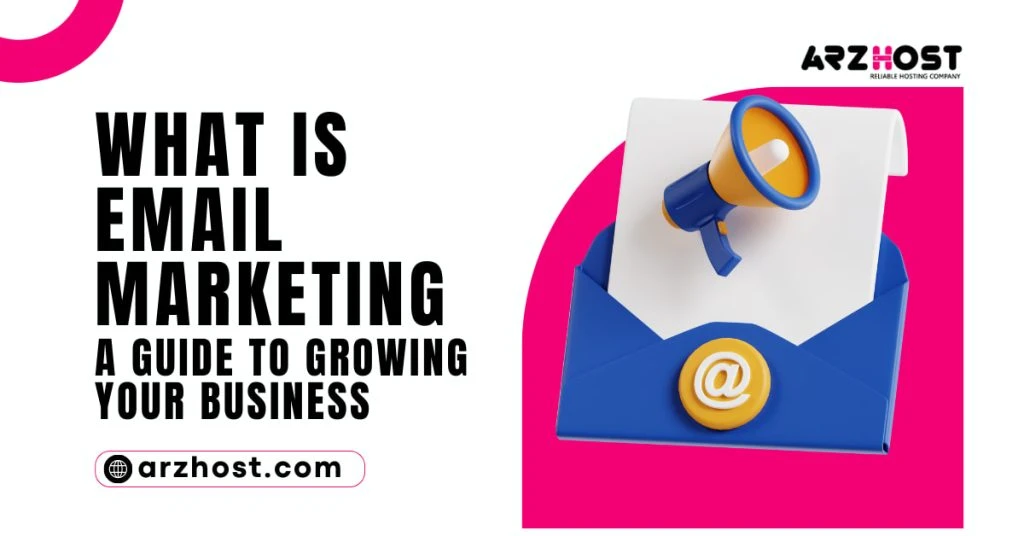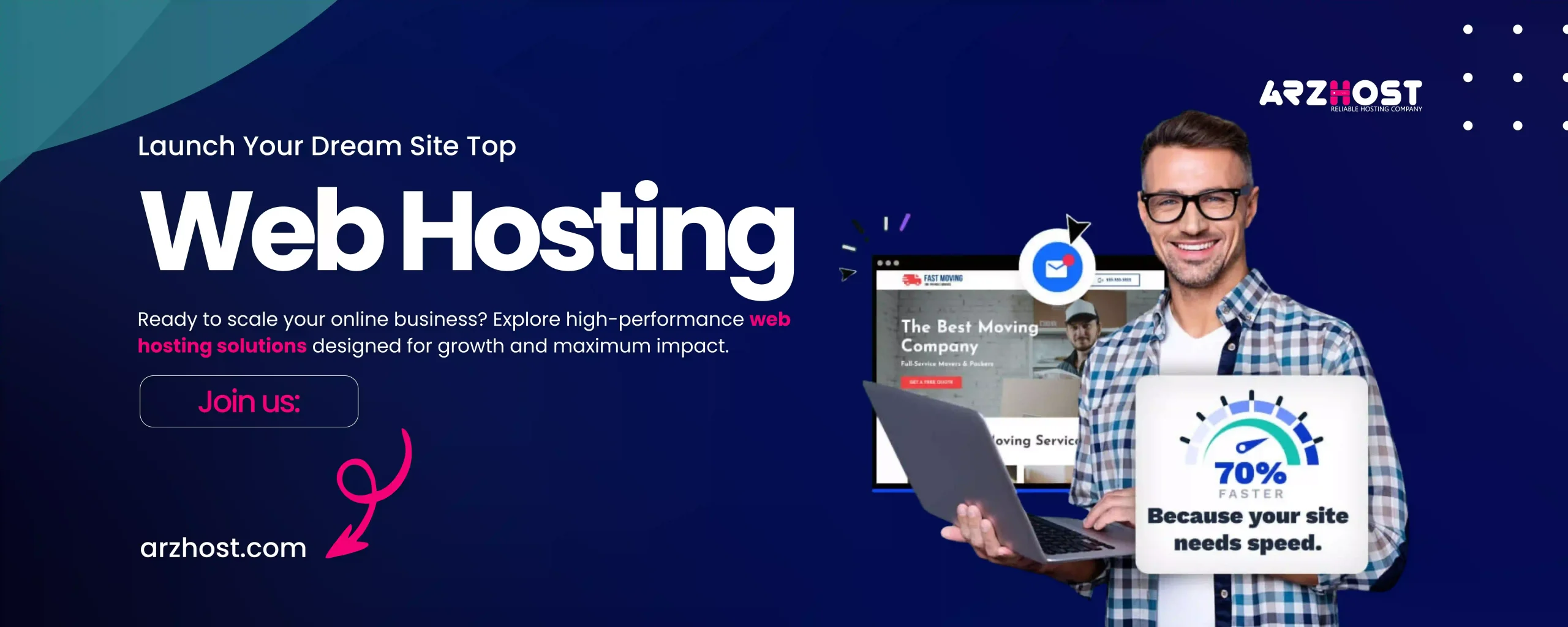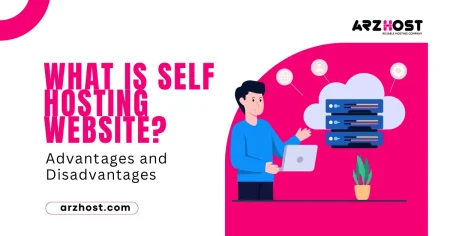What is Email Marketing?
Digital marketing techniques such as email marketing are used to reach out to potential clients, promote marketing initiatives, and increase brand awareness. What is Email Marketing?
Email marketing is frequently regarded as a low-cost, high-impact strategy in the field of online marketing that has the power to boost customer engagement and boost revenues.
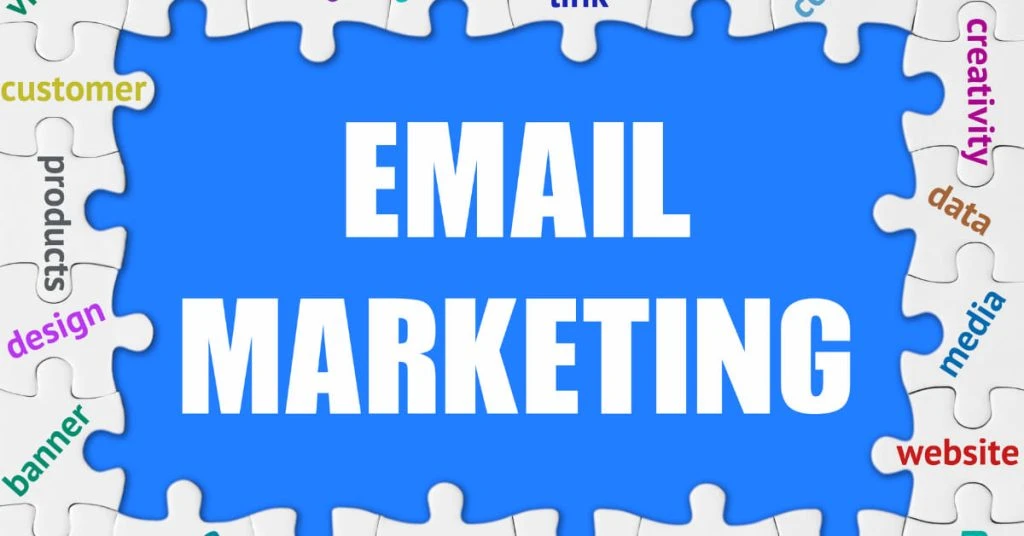
As a result, it frequently serves as the basis for many modern digital marketing techniques. In this article, I’ll examine what is email marketing in more detail, go over some of its advantages, and provide advice and tools to help you launch your email marketing campaign.
What is Email Marketing Exactly Mean?
What is Email Marketing being all about the process of sending promotional emails or other commercial content to a certain audience or group of people. It entails communicating with current or future consumers via email to promote goods, services, or events.
Creating and maintaining an email list of people who have voluntarily submitted their email addresses or enrolled to receive news and updates from a certain business or organization is usual for email marketing. Several techniques, including website opt-ins, lead generation forms, and client sign-ups, can be used to create these email lists.
Marketers can create and deliver recipients-specific emails after they have an email list in place. In order to engage and persuade users to become customers, these emails may contain newsletters, product announcements, special offers, tailored recommendations, or any other pertinent information.
There are several benefits that email marketing can provide for companies. It offers a direct and economical method of reaching a big audience, enabling businesses to send emails directly to customers’ inboxes.
As emails may be customized to particular recipients based on their interests, preferences, or prior encounters with the brand, it also enables personalized messages.
Additionally, email marketing gives companies the ability to monitor and assess the success of their efforts. Marketers may evaluate the effectiveness of their emails and make data-driven decisions to enhance upcoming campaigns by looking at KPIs like open rates, click-through rates, conversions, and unsubscribe rates.
It’s essential to keep in mind, though, that efficient email marketing demands compliance to pertinent rules and regulations, including getting the recipients’ agreement and offering an unsubscribe option. Successful email marketing campaigns must take user experience and privacy protection seriously.
There are various types of marketing emails that you might think about including in your email marketing strategy. Typical email formats include the following:
- Welcome emails
- Email newsletters
- Marketing emails
- Emails that nurture leads or encourage engagement
- Transactional emails, such as notices of password resets or confirmation emails
- Emails requesting feedback or surveys
- Milestone emails, like those sent on a customer’s birthday or anniversary
Benefits of Email Marketing: A Powerful Tool for Business Growth
What is Email Marketing being still a tried-and-true method for companies to communicate with their audience, establish client connections, and spur growth in the broad and always-changing digital environment of today.

With its unmatched reach, low cost, and high conversion rates, email marketing has established itself as a crucial part of effective marketing operations. In the next section, I’ll go through the many advantages of email marketing and show how it can help companies outrank rivals and gain a lot of internet visibility.
1: Building Strong Customer Relationships
The capacity of email marketing to create and maintain solid client relationships is one of its main benefits. Businesses can interact with their audience more personally by sending customized and pertinent material right to subscribers’ inboxes.
Companies can target certain client demands, give special deals, and deliver insightful information by using tailored email marketing. This tailored strategy promotes long-lasting client connections, trust-building, enhanced brand loyalty, and higher customer retention rates.
2: Cost-Effectiveness and High ROI
Email marketing has an amazing return on investment (ROI) when compared to traditional marketing mediums. Businesses can make the most of their marketing budgets while obtaining great results by targeting particular client segments with little investment in production costs.
What is Email marketing & its allows companies to reach a large audience for a fraction of the price of print advertising or direct mail campaigns, which can include significant costs.
Companies can achieve outstanding ROI and earn sizable income by carefully developing persuasive email content, improving email deliverability, and using analytics to fine-tune campaigns.
3: Increased Website Traffic and Conversions
For website traffic and conversions, email marketing is a potent motivator. Businesses can direct subscribers to their website by tactfully including links to pertinent landing pages and enticing calls to action within email campaigns.
In addition to improving website visibility, the additional traffic also creates the potential for lead generation and conversion. Additionally, by dividing email lists into different groups based on the interests and behaviors of their customers, businesses may better target their content and offer to different target markets, which will increase the possibility of conversion.
4: Measurable and Trackable Results
Email marketing provides unmatched measurability and tractability compared to traditional marketing strategies. Businesses may track a variety of KPIs, including open rates, click-through rates, bounce rates, and conversion rates, with the help of sophisticated email marketing tools. These insights offer useful information that can be used to evaluate the success of campaigns, make data-driven decisions, and improve marketing tactics.
Businesses can find areas for improvement, better their campaigns, and have more success connecting with their target market by routinely evaluating performance analytics.
5: Automation and Personalization
The way that organizations interact with their customers has been changed by email marketing automation. With the aid of automation software, businesses may send tailored emails in response to predetermined triggers, such as a user’s actions or particular dates.
Personalized content delivery, lead nurturing, and customer conversion are all made easier by this automation. Utilizing automation, companies may deliver timely, relevant communications to subscribers, increase efficiency, and improve customer experience.
6: Increased Brand Awareness and Authority
An effective email marketing approach may make a major difference in raising brand awareness and authority. Delivering helpful material to subscribers’ inboxes on a regular basis positions firms as sector authorities, building credibility and trust with their audience.
Businesses may strengthen their brand presence, increase their reach, and set themselves apart from rivals with educational newsletters, thought leadership articles, and special deals. Companies may build their brand’s reputation and establish themselves as the go-to source for customers looking for pertinent information and answers by continuously producing high-quality content.
7: Enhanced Customer Segmentation and Targeting
Businesses may offer communications that are highly targeted and audience-segmented thanks to email marketing. Companies may identify various client categories and customize their email marketing campaigns by collecting useful subscriber data, such as demographics, preferences, and purchase history.
This personalized strategy makes sure that recipients get material that suits their individual requirements and interests, which boosts engagement and conversion rates. Businesses can create extremely efficient marketing tactics that connect with specific subscribers by better understanding their target.
How to do Email Marketing?
To send marketing emails, companies use ESPs or email service providers. A program that handles and dispatches email marketing campaigns is known as an email service provider.
The terms “email marketing platform,” “email marketing tool,” “email marketing service,” and “email marketing software” are also used to describe it. Can’t I just send marketing emails using my regular inbox provider, you might be asking. Do I really need to pay extra for a product?
It is technically feasible. (We even detail how in our guide on using Gmail to send bulk emails.) But be cautious. You might experience issues with email deliverability, email design, and limited email bandwidth. This is why:
Gmail, Outlook, Yahoo, and other Internet service providers (ISPs) are not intended for mass emailing; rather, they are for personal use. They are not free bulk email senders, despite the fact that they are free to use.
As a result, spam filters are quick to identify a mass email sent from an ISP and your account may be suspended for questionable behavior.
On the other hand, email service providers (ESPs) have the infrastructure required to guarantee high email deliverability rates, i.e., the capacity to deliver emails to your subscribers’ inboxes. Get yourself a dedicated email marketing provider if you want to position yourself for success with email marketing right away.
How to Choose an Email Service Provider?
Any effective business strategy must now include email marketing as a key element. Businesses can interact with their customers, develop prospects, and increase conversions thanks to it.
But picking the best email service provider (ESP) might be difficult. Finding an ESP that satisfies your unique needs and aids in the accomplishment of your marketing objectives is essential given the wide range of alternatives on the market.
In this Section, I will guide you through the process of choosing an email service provider that best suits your requirements.
1: Understanding Your Business Goals
It’s essential to establish your business objectives before stepping foot in the world of ESPs. What do you hope to accomplish with email marketing? What is Email Marketing? Do you want to boost client loyalty, increase brand recognition, or increase sales? You may choose the characteristics and functionalities you need from an ESP by defining your objectives.
2: Assessing Deliverability and Reputation
An important consideration when choosing an ESP is email deliverability. After all, if your emails end up in the recipients’ spam boxes, they won’t do anything. Your emails’ chances of being opened and read are increased when they are delivered to the inbox by a reliable ESP.
Consider aspects such as an ESP’s delivery rates, anti-spam rules, authentication mechanisms (SPF, DKIM, DMARC), and reputation among other users when assessing an ESP’s deliverability. Pick ESPs who have a proven track record of upholding high deliverability rates and vigorously battling spam.
3: Scalability and Flexibility
Your email marketing requirements will change as your business expands. Therefore, it’s essential to pick an ESP that can grow with your company. Consider your present subscriber base and project its potential future growth.
Make sure the ESP you select has the capacity to accommodate your anticipated growth without jeopardizing performance or customer satisfaction. Furthermore, being flexible is important while choosing an ESP. Choose one that enables you to segment your audience, automate campaigns, personalize email templates, and integrate with other products or platforms you utilize.
You’ll be able to provide your subscribers with more specialized and individualized material if you can adapt your email marketing plan to your unique needs.
4: Feature Set and Ease of Use
Many features and functionalities are available from various ESPs. Examine your needs and rank the elements that support your objectives. Common characteristics to consider include:
- Email Automation: The ability to set up automated email campaigns based on triggers or user actions.
- Segmentation: The option to divide your subscriber list into segments based on demographics, preferences, or behaviors.
- A/B Testing: The capability to test different variations of your emails to optimize performance.
- Analytics and Reporting: Robust tracking and reporting features to measure the success of your campaigns and make data-driven decisions.
- Integration: Seamless integration with other platforms such as CRM systems, e-commerce platforms, or marketing automation tools.
Additionally, take into account the user interface and general usability. You’ll save time and have an easy time managing your email campaigns with an intuitive and user-friendly interface.
5: Pricing and Support
Pricing should surely be taken into account while selecting an ESP. Cost shouldn’t be the only deciding element, but it’s crucial to assess price plans to see if they fit within your budget and deliver the ROI you expect.
While some ESPs charge depending on the volume of emails sent, others provide tiered pricing based on the number of subscribers. Take into account the ESP’s level of support as well. It’s essential to have dependable customer service, especially if you run into technical difficulties or have queries regarding particular features.
Choose an ESP that provides a variety of support options, including live chat, email, and phone assistance, and make sure that their response times are acceptable.
6: Reviews and Recommendations
When choosing an ESP, keeping in mind other users’ experiences can offer insightful information. To evaluate the reputation and user satisfaction levels of various ESPs, look for information about them in online reviews, forums, and social media platforms.
Check reviews for opinions on aspects including usability, customer service, deliverability, and overall user experience. What is Email Marketing is about Making the best choice for your email service provider is crucial since it may have a big impact on how successful your email marketing efforts are.
You can choose a solution that meets your demands by comprehending your business objectives, evaluating deliverability, taking into account scalability and adaptability, assessing feature sets, pricing, and support, and reading user evaluations.
Keep in mind that every business is different, so what works for one company might not necessarily work for another. Spend some time comparing several ESPs in light of your unique needs, then pick the one that gives you the ability to design effective email campaigns and forge enduring connections with your audience.
What are the Costs of Email Marketing?
The price of email marketing can vary significantly based on your email list size, the volume of emails you send, the type of assistance you require, and the technological requirements you have. Free email marketing programs may be more than functional enough for certain people. Others may spend hundreds or even thousands of dollars per month on email marketing.
You’ll note that most providers base their costs on the number of contacts on your email list as you compare your options. For individuals who are just starting out, this pricing structure may seem appealing, but as your list expands, costs significantly increase.
While ARZ Host bases its cost on email traffic rather than subscriber count, the latter does not. In this approach, your email list can expand indefinitely without affecting the price.
The Starter Plan, which starts at $ and includes 20,000 monthly emails and unlimited subscribers, is more than adequate for any small firm just getting off the ground. Try it out right now!
What Time of Day is Ideal for Sending Marketing Emails?
Be strategic when deciding when to send your emails, not just pick a random day and time. Select the ideal time to send emails to your audience based on what you already know about them.
According to ARZ Host’s study, what is email Marketing is about efforts often perform better when they are sent on Tuesdays or Thursdays at 10 a.m. or at 3 p.m.
But what works well for most people might not work best for you. It’s crucial to run tests at various times to determine your audience’s sweet spot. Alternately, use ARZ Host’s Send Time Optimization function, which determines the ideal moment for each specific contact based on historical engagement information.
Check out our study on when to send emails for more information.
Suggestions and Best Practices for Email Marketing
You may reach your marketing objectives and engage current and potential customers with a fruitful email marketing campaign. To accomplish this, though, you’ll need to design a targeted email campaign that targets clients with timely and pertinent content.
What is Email Marketing? Keep the following advice in mind as you try to create your own email marketing campaign:
- Email subject lines should be eye-catching.
- Your message should be carefully constructed.
- Keep it simple with your design.
- Just send emails to subscribers.
- Plan the timing of your emails.
- Observe and conduct tests.
Let’s examine each suggestion in further detail about what is Email Marketing?
1: Email Subject Lines Should Be Eye-Catching
While the message’s content elaborates on your value proposition and implores readers to act, the subject line grabs the reader’s attention and encourages them to open the message.
A strong subject line will help you stand out from the crowd in the recipient’s inbox, where competition is fierce due to the enormous amount of daily emails. The average open rate for branded emails across all businesses is merely 21.33 percent, underscoring this reality.
People who open emails with standout subject lines find them interesting and pertinent. Among the techniques to make your subject lines better are:
- A promotion should be made clear. “Get 15% Off Your Next Purchase”
- Establish a sense of urgency. (“Act now! Our Spring Sale at 30% Off Ends in 24 Hours”)
- Create an interest in learning. “Ice Skating in June?”
- Highlight a particular time frame. (“Still Need to Shop for Christmas? We’re here to support you.
- Customize it. “Jane, Your Subscription Is Nearing an End!”
2: Your Message Should Be Carefully Constructed.
Any writing needs structure, but marketing emails particularly need it.
You may quickly communicate your value proposition to your reader by carefully arranging the substance of your message, saving them time. In example, one study anticipated that in 2021, users will spend only 10 seconds on average reading branded emails. You could have just a few seconds to communicate your point.
Make sure that your email is well-structured to make the most of this limited time. In the brief time you have with your reader, there are a few strategies to make the most of your impact:
- Include the information you want recipients to see first in your email, such as the promotion.
- To make it easier for readers to access the information they require, make it scan able.
- Reduce the amount of text you use by using links to larger content, like blog entries that the email refers to.
- CTAs, like links, should be scattered throughout your article.
- To guide recipients who have scrolled through the entire email, make sure there is a clear CTA at the end of the message.
3: Keep it Simple with Your Design.
Between eye-catching and distracting, there is a fine line. On the one hand, you want to produce an attention-grabbing visual design. On the other hand, you need to guarantee that important information is highlighted and easily understood. Therefore, a straightforward design is typically more efficient than a complex one.
When creating about what is Email Marketing? some important factors to keep in mind are:
- In your email, use no more than three colors. A smaller color palette will draw the eye without being unduly distracting.
- Draw attention to your branding and logo. You want the receiver to understand who sent it and where they can find your product right away.
- Highlight CTAs visually.
- Make your messaging mobile-friendly. Your emails must be optimized for mobile devices since many consumers read their email on smartphones.
4: Just Send Emails to Subscribers.
It’s essential that you only email people who consciously chose to receive them. This practice has a number of justifications. First, even if it is technically possible, many marketing platforms restrict the practice of buying email address lists from outside parties.
Second, in some circumstances, it can be against the law for you to send marketing emails to people who have opted out of receiving them.
Sending emails to people who have previously opted out of receiving them is expressly prohibited by the CAN-SPAM Act (Controlling the Assault of Non-Solicited Pornography and Marketing Act), a 2003 law in the United States.
Each separate email that violates the CAN-SPAM Act could result in fines of up to $43,792, according to the law.
Additionally, it can be ineffective to send unsolicited emails. Although it may seem that sending as many emails as you can will help you achieve your marketing objectives, email marketing actually works best when you are targeting a particular audience.
It makes more sense to market your product or service to those who have previously expressed interest rather than sending emails to people who don’t want them and running the risk of having them land in spam folders or increasing the number of people who unsubscribe from your list.
5: Plan the Timing of Your Emails.
What is Email Marketing is mostly dependent on timing. Sometimes the greatest approach to increase consumer engagement and accomplish your email marketing objectives is to send the appropriate information at the appropriate time.
Email marketing advantages from being easily automated as a type of digital marketing. You may automatically send emails to a specific audience using marketing automation. You can design automated email series to send once a potential customer completes a particular activity, like signing up for your email list, or you can use email automation to send targeted emails at specified periods of the year, such during the holidays.
By automatically sending out pertinent emails that retain brand awareness and direct recipients through your marketing funnel, automated nurture sequences keep recipients interested.
6: Observe and Conduct Tests.
You regularly obtain data on the effectiveness of your efforts, which is one advantage of digital marketing. This information may be quite helpful as you refine your marketing strategy and look for more effective ways to connect with and communicate with your target market.
Platforms for email marketing let you monitor crucial information like your open rate, click-through rate, and conversion rate. Additionally, a lot of them enable you to conduct A/B testing, which contrasts the results of two separate campaigns in order to pinpoint the qualities of email campaigns that perform well.
Your overall email marketing campaign’s performance can be enhanced by routinely reviewing your data and running experiments. Additionally, as data is gathered, you may create email templates based on what typically works for your company to increase productivity for subsequent campaigns.
What is Email Marketing Platforms and Tools?
To increase team productivity, email marketers frequently make use of a variety of email marketing tools and platforms. These platforms have sophisticated capabilities that can assist you in designing personalized emails, managing your contact list, sending automated emails, and tracking your email marketing efforts as you put your marketing strategy into practice.
What is Email Marketing? These are a few examples of popular email marketing platforms:
- Omnisend
- Get Response
- Sendinblue
- Mailchimp
- Constant Contact
- Active Campaign
Use these tools to implement your email marketing plan, whatever your marketing objectives may be.
Why Email Marketing Matters?
What is Email marketing, a direct marketing and digital marketing tactic that uses email to advertise the goods and services of your company, is a potent marketing channel. By incorporating it into your marketing automation initiatives, it can assist in informing your clients about your most recent products or offers.
Email marketing is a highly effective strategy that offers numerous benefits for businesses. Here are some key reasons why it matters:
- Direct Communication: By sending them personalized messages to their inboxes, email enables you to communicate with your audience directly. This open channel of contact enables you to build stronger relationships and interact personally with your users.
- Increased ROI: When compared to other marketing channels, email marketing regularly offers one of the highest returns on investment. You may increase conversions and bring in money by growing your email list and launching relevant marketing.
- Audience Segmentation: You may divide your audience into different categories using email marketing, depending on things like demographics, past purchases, and degrees of participation. This enables you to target particular categories with your communications and offers, increasing engagement and conversion rates.
- Automation and Personalization: With the use of email marketing solutions’ robust automation features, you can automate time-consuming operations like welcome emails, abandoned cart notifications, and birthday offers. Additionally, you can customize your emails to ensure that each receiver feels respected and comprehended.
How to Get Started with Email Marketing: Step-by-Step Guide
Your email marketing campaign simply needs two things to begin going: The most effective way to send promotional emails is through email marketing tools, which make it simple and quick to compose and distribute emails to many of recipients. Better email deliverability rates and timeliness are guaranteed when using email marketing solutions rather than standard inbox providers (such as Gmail or Yahoo).
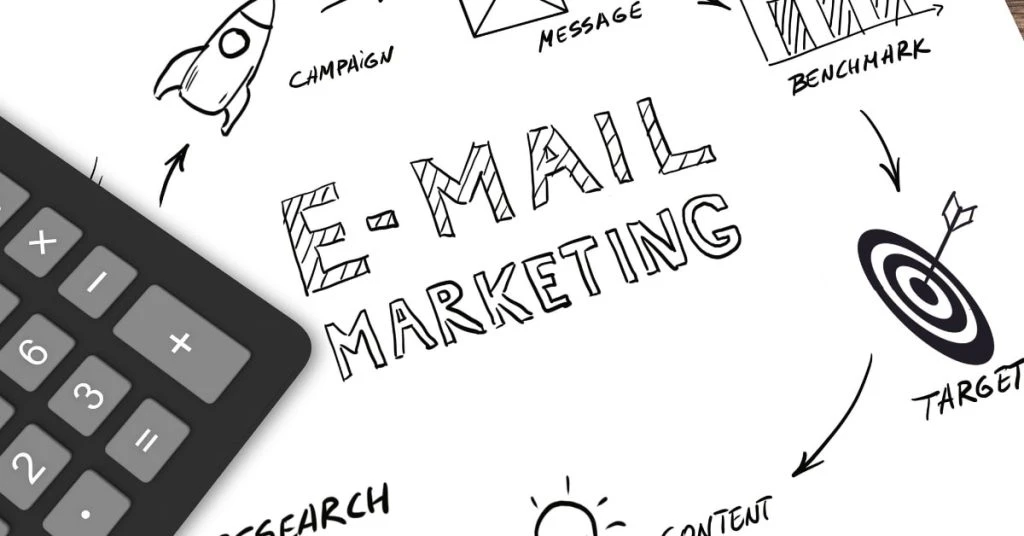
Your email contact list should include the email addresses of subscribers who have specifically chosen to receive emails from you. Once you’ve set up these two items, you can start creating and implementing email marketing campaigns:
Step 1: Define Your Goals and Target Audience
Setting goals and determining your target market is essential before beginning email marketing. What is Email Marketing? What do you hope to accomplish with email marketing?
Do you want to boost website traffic, increase brand recognition, or increase sales? Your email campaigns can be customized after you have a good grasp of your goals.
Create buyer personas to further help you identify your target market. Recognize their preferences, pain spots, and demographics. This information will direct your content development and assist you in distributing pertinent messages to the appropriate audiences.
Step 2: Choose the Right Email Marketing Platform
You need a dependable and feature-rich email marketing platform to carry out effective email marketing campaigns. There are numerous choices, each with a unique set of features and price ranges. Here are some well-liked platforms to think about:
- Mailchimp: Known for its user-friendly interface and comprehensive features, Mailchimp is a great choice for beginners.
- Constant Contact: This platform offers a wide range of customizable templates and is known for its excellent customer support.
- Getresponse: With advanced automation capabilities, Getresponse is ideal for businesses that require sophisticated email workflows.
- Campaign Monitor: Offering an intuitive drag-and-drop builder, Campaign Monitor makes it easy to create visually appealing emails.
Choose the platform that best suits your needs and budget.
Step 3: Build Your Email List
A strong and engaged email list is the foundation of successful email marketing. What is Email Marketing? Here are some effective strategies to build your email list:
- Opt-in Forms: Place opt-in forms on your website, blog, and social media profiles to encourage visitors to subscribe to your emails. Offer incentives such as exclusive content or discounts to entice them to sign up.
- Lead Magnets: Create valuable lead magnets such as ebooks, whitepapers, or checklists that visitors can download in exchange for their email addresses.
- Events and Webinars: Host webinars or events and collect email addresses from attendees who are interested in receiving further information.
- Social Media Campaigns: Promote your email newsletter on social media platforms, driving traffic to your website’s landing page.
Recall to follow all applicable data protection and privacy laws, such as the GDPR or CCPA, and to always have subscribers’ express consent.
Step 4: Craft Compelling and Engaging Emails
Now that you have your email list, it’s time to craft compelling and engaging emails that resonate with your subscribers. What is Email Marketing? Here are some tips:
- Subject Line: Write attention-grabbing subject lines that compel recipients to open your emails. Keep them concise, clear, and personalized whenever possible.
- Personalization: Use merge tags to personalize your emails with recipients’ names or other relevant information. Personalization creates a sense of individual connection and boosts engagement.
- Compelling Content: Create valuable and relevant content that aligns with your subscribers’ interests and needs. Offer solutions to their pain points and provide actionable insights.
- Call to Action: Clearly define the next steps you want subscribers to take. Whether it’s making a purchase, reading a blog post, or attending an event, include a persuasive call to action.
Step 5: Test, Analyze, and Refine
Continuous improvement is essential to the success of email marketing because it is an iterative process. Test several aspects of your campaigns on a regular basis, such as call-to-action positioning, email design, and subject lines. Analyze the outcomes and metrics offered by your email marketing platform to learn what works and what needs to be improved.
Based on these information, adjust your strategy and continually improve your email marketing campaigns to get better outcomes.
Email Marketing Template, and How can you use one?
For those without any experience, creating and implementing an email marketing campaign may seem like a big undertaking; but, using templates makes it quick and simple.
Nearly all email marketing systems provide a selection of templates for marketers to use. A variety of templates organized by purpose are available for your selection. There are templates for seasonal greetings, new product announcements, transaction emails like order confirmations, and emails asking for consumer feedback on purchases.
Premium layouts and buildable content blocks are available from Email Studio. Additionally, you may drag and drop dynamic material that adapts to the audience in real-time.
You must select a template from the ones provided by your email marketing service in order to create an email using that template. All you need to do is drag and drop content items into place, add images and copy, then hit send once you’ve selected your template and written your material.
Whether it be a desktop, tablet, or smartphone, any effective email marketing provider will provide templates that adapt emails to the device they are being seen on.
Additionally, templates may be configured to be emailed automatically in response to specific “triggers”. You may set up the email marketing solution you use to send out a template email each time a consumer takes a specific action, like making their first purchase or signing up for newsletters, for example.
How to Write a Marketing Email? A Complete Guide
In the current digital era, email marketing is still a potent tool that helps companies connect with their customers, encourage sales, and create enduring connections. It’s crucial to create engaging marketing emails that stand out in a busy inbox.
I’ll show you step-by-step What is Email Marketing and how to create an engaging marketing email that increases conversion rates in this comprehensive tutorial.
1: Understanding Your Audience
It’s essential to have a firm grasp on your target audience before you start writing. Think about their goals, preferences, pain spots, and demographics. With the use of this knowledge, you can modify the content of your emails so that it speaks to your subscribers personally and therefore raise engagement and conversion rates.
2: Crafting a Captivating Subject Line
Your email’s subject line makes a first impression and is extremely important in influencing whether it will be opened or not. Keep it brief, pertinent, and appealing to develop a subject line that will catch people’s attention. To get people to open your email, use action phrases, customization, and a sense of urgency.
3: Personalizing the Email Content
Making a deep relationship with your audience requires personalization. Use segmentation to offer material that is specific to your audience’s interests, behaviors, or previous encounters with your business. Address your receivers by name. Emails with a personal touch are more likely to be read, opened, and responded to.
4: Engaging Introduction
Your marketing email’s start should grab the reader’s attention right away and encourage them to keep reading. Start with a powerful hook, like a persuading question, an intriguing statistic, or a sympathetic tale. Make it obvious why the recipient should care about the email and what benefits they may anticipate from reading on.
5: Clear and Compelling Message
The body of your email should be clear and straightforward in its content. For better readability, use short paragraphs and bullet points. Emphasize the advantages of your offering and show how it might ease the recipient’s problems. Use storytelling approaches to add interest and relatability to your information.
6: Call-to-Action (CTA)
A compelling call-to-action (CTA) should be present in every marketing email. The CTA encourages the reader to perform the desired action, like as buying something, joining up for a webinar, or downloading an eBook. Use contrasting colors, strong content, and a sense of urgency to make your CTA stand out.
7: Optimizing for Mobile Devices
Your marketing emails must be optimized for mobile devices due to the growing use of smartphones. To effortlessly adjust to various screen widths, make sure your email is responsive. To improve reading on smaller devices, use a readable font size, plenty of white space, and a single-column layout.
8: Proofreading and Testing
Before hitting the send button, take the time to proofread your email for grammar, spelling, and formatting errors. A well-polished email reflects professionalism and instills confidence in your brand. Additionally, conduct A/B testing to experiment with different subject lines, CTAs, or content variations. Analyze the results to refine your email marketing strategy further.
9: Analyzing and Optimizing Performance
After sending your marketing email, be sure to monitor its effectiveness. Measure open rates, click-through rates, and conversions using email analytics software. Make data-driven decisions to optimize upcoming email campaigns by analyzing the data to learn what works best for your audience.
A systematic approach and close attention to detail are necessary when creating an effective marketing email. You can develop emails that stand out and produce significant results by knowing your audience, tailoring the content, and adding interesting components.
In order to improve your email marketing efforts over time, keep in mind to optimize for mobile devices, proofread thoroughly, and assess performance.
How to Make Money with Email Marketing? 7 Profitable Strategies
One of the most successful and reliable strategies for making money online has been email marketing. With the appropriate strategy, it can aid in audience retention, sales growth, and revenue augmentation.
I’ll discuss 7 effective strategies in this section that can boost your email marketing revenue. What is email marketing about these following strategies will offer insightful information to help you improve your email marketing efforts, whether you’re an experienced marketer or just getting started.
- Building a High-Quality Email List
- Crafting Compelling Email Content
- Utilizing Personalization and Segmentation
- Implementing Automated Email Sequences
- Promoting Products and Services
- Leveraging Affiliate Marketing
- Monetizing Through Sponsored Emails
Sending promotional emails to a group of people via email is referred to as email marketing. Businesses may interact with their target market, foster relationships, and increase conversions thanks to it.
Email marketing has the potential to create a strong brand presence and offer a high return on investment (ROI) when done properly.
1: Building a High-Quality Email List
A top-notch email list is the foundation of an effective email marketing strategy. Keep your attention on luring customers that have real interest in your market or sector. Offering worthwhile content incentives, like e-books, special deals, or educational newsletters, will help you grow your list.
Your subscriber base can increase by using opt-in forms on your website and social media sites.
2: Crafting Compelling Email Content
It’s essential to send engaging and quality email content once you have a list of interested subscribers. Your emails should be well-written, succinct, and pertinent to the interests of your readership. To interest readers and compel them to act, use persuasive language, storytelling techniques, and a conversational tone.
Don’t forget to add a call-to-action (CTA) that drives subscribers toward the targeted conversion objective.
3: Utilizing Personalization and Segmentation
For your email marketing to have the greatest impact, personalization is essential. Create email list segments depending on a person’s demographics, interests, past purchases, or level of participation.
As a result, your communications will be more relevant and effective because they can be tailored to particular audiences. Personalization is further improved by using subscribers’ first names and dynamically changing content to match their preferences.
4: Implementing Automated Email Sequences
You can grow relationships with your subscribers on a large scale by using automated email sequences. Make a sequence of emails that are scheduled in advance and lead recipients through a customer journey while providing value.
Examples of automated sequences that can increase engagement and conversions include welcome emails, instructive sequences, and reminders for abandoned carts. To ensure timely and pertinent messages, configure triggers based on user behavior.
5: Promoting Products and Services
Promoting your goods or services is one of the main ways to earn money from your email marketing efforts. Create email campaigns that are interesting and that showcase the advantages and features of your products. To establish credibility, use compelling copywriting strategies and incorporate case studies or testimonials. Use time-sensitive promotions, special discounts, or cost-free trials to encourage purchases and increase conversions.
6: Leveraging Affiliate Marketing
Using the effective approach of affiliate marketing, you can sell the goods or services of other people in exchange for a commission. Join forces with industry-relevant brands or businesses and add affiliate links to your emails. You receive a share of the sale when one of your subscribers buys something using those links. Select trustworthy affiliate programs and products that are in line with the wants and needs of your target market.
7: Monetizing Through Sponsored Emails
Email marketers can generate additional income through sponsored emails. Send sponsored emails to your subscribers in partnership with other companies or industry leaders. Make sure that the sponsored material adheres to the same standards of quality as your normal emails and is relevant to your audience’s interests.
These sponsored messages should be made available for a fee, and any sponsored content should be properly disclosed. What is Email marketing having a lot of potential for bringing in money and creating enduring connections with your audience. You may efficiently use email to generate income by putting the tips in this article into practice.
Always remember to customize your communications, offer regularly useful material, and intelligently market your offerings. Email marketing has the potential to be a big source of revenue for your company with time, effort, and a data-driven strategy.
Conclusion
What is Email Marketing should unquestionably be a part of your toolkit because it is a potent, reasonably priced, and distinctive instrument. It has the ability to yield impressive results with minimal cost, learning, and effort.
When using email marketing, it’s crucial to obtain consent before sending out promotional emails. Be courteous and appreciate your subscriber’s decision to let you into their mailbox as a guest. Delivering on your subscribers’ expectations is a crucial part of effective email marketing.
Every business or brand will always have a different approach to email marketing. Your subscribers will stick around as long as you remain interesting, relevant, and new. As you get better at email marketing, you can start email segmentation, which involves sending different emails to different recipients in order to maximize delivery and interaction.
Both simple and complex email marketing campaigns can be created and implemented using ARZ Host. It enables simple contact management and greater segmentation for more precise targeting.
You can scale up the delivery of timely messaging to audiences and automate your campaigns. Additionally, it offers a variety of features that make it possible to create timely, relevant, and engaging emails while on the road.
FAQ`s
Q # 1: What are the key metrics to track in email marketing campaigns?
Some key metrics to track in email marketing campaigns include open rates, click-through rates (CTRs), conversion rates, bounce rates, and unsubscribe rates.
Q # 2: How often should I send emails to my subscribers?
Your audience and the type of your business will determine how often you send emails. Striking a balance between remaining top-of-mind and avoiding overwhelming your subscribers is generally advised. To identify the sweet spot, experiment with various frequencies and track the response.
Q # 3: Can I use purchased email lists for my email marketing campaigns?
Using email lists that have been purchased is not advised. Having an organic and active email list increases the likelihood that your communications will be seen by people who are truly interested in your business.
Q # 4: How can I improve my email open rates?
Consider employing eye-catching subject lines, personalization, segmentation, and A/B testing to increase email open rates. Additionally, make sure that your emails are device-optimized and that the sender name and email address are trustworthy and identifiable.
Q # 5: What are some legal considerations for email marketing?
Legal requirements including the CAN-SPAM Act and the General Data Protection Regulation (GDPR) must be followed while using email marketing. Learn about these rules so you can make sure your email marketing strategies are legal.
Q # 6: How can I prevent my emails from going to the spam folder?
Follow best practices, such as double opt-in, avoiding spam trigger phrases, verifying your email domain, and preserving a positive sender reputation, to stop your emails from being classified as spam.
